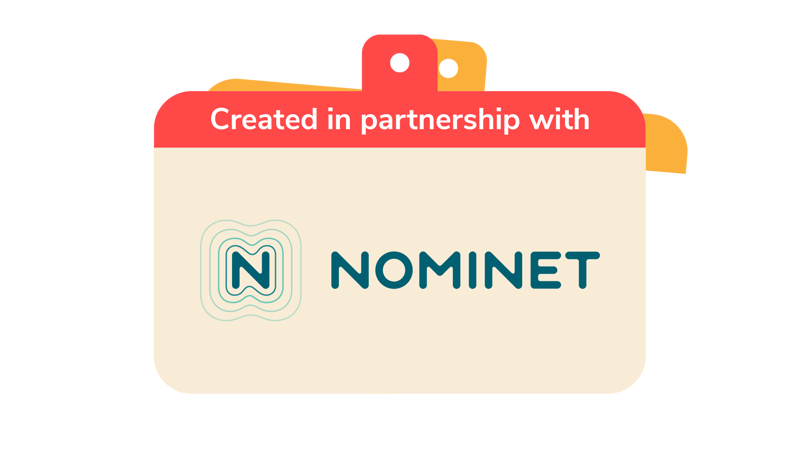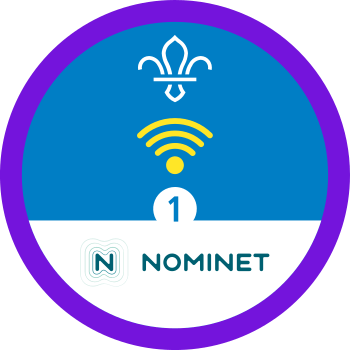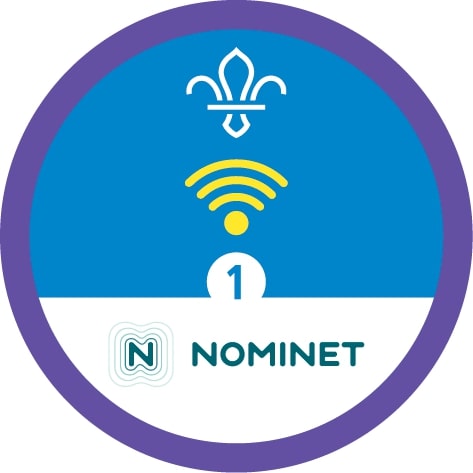
Build a brilliant campaign
You’ll need
- Scrap paper
- Pens or pencils
- Masking tape
- Sticky notes
- Devices with access to the internet
Before you begin
- This activity should be done a few weeks before a community event that people want to raise awareness of. Events could include a sale, a sponsored event, a fundraiser, a themed day or a creative arts event.
- The person leading the activity should paste a long line of masking tape across a wall of the meeting space. Put a post-it note at the beginning with today’s date on it and the date of the event on the other end of the tape. (If there isn’t enough wall space, stick the tape on the floor or even across a table.)
- Everyone’s going to work together in groups to plan, create and manage a social media campaign for their event.
- If you’re working towards Stage 4 of the Digital Citizen Staged Activity Badge you’ll need to make sure your team includes people from other parts of the country, or the world. There are lots of ways to get in touch with Scouts in other countries. There’s guidance on the Scouts website.
Build a brilliant campaign
- Split into small groups. Each group should take some scrap paper and fold in half twice, so that the page is split into four sections.
- Groups should chat about planning their campaign using the information below. Add some notes for the ‘Who?’, ‘What?’, ‘Why?’ and ‘How?’ of their online campaign, one in each of the four sections on their paper.
- Next, everyone should discuss the ‘Where?’ and the ‘When?’ of their campaign. They should think about their ideas for posts and information they can release as part of their online campaign and start writing some of these ideas on sticky notes.
- Groups could use their devices to search for more information about the event or look at successful local online campaigns.
Planning your campaign
Who is your target audience and what message do you want to get across to them? Are you targeting teens, adults or older adults or a specific group such as runners or gardeners?
Think about using a free design app like Canva to create attractive posts and pictures to use online. You can keep the branding the same on each post.
What’s your call to action? Do you want to raise money, encourage people to attend an event or join in with a project? Make sure you repeat this call to action in different ways. You could use an analytics tool to look at the reach and response of your posts.
For example, a message might be something like, ‘don’t forget to put this date in your diary!’ or ‘save the date! You won’t want to miss this one.’
Think about why people should take notice of your campaign. What’s in it for them? Will they have fun, come together as a community or help others? You might add a competition element such as a competition for children or a challenge or quiz.
For example, you could have a colouring competition for children, grow the tallest sunflower, bake a themed cake or win a raffle.
This is where you plan all the fun posts you’ll be creating. Decide if you’ll stick to one social media or communication platform or several. Don’t forget your audience! Which sites are they more likely to actively use? Would email be better? Don’t forget GDPR rules (General Data Protection Regulations). Add hashtags that relate to your event and include local area hashtags so local community groups can see them.
For example, if you’re targeting young people, you could use a popular dance or meme and adapt it for your event.
Plan the amount of posts you’ll create for each platform and decide if you’ll use a scheduling tool to release them.
For example, you could schedule the same three posts per day on one platform and add in a creative video every other day on the week before the event. In the three days before the event you could plan to release more information, a poll or a countdown.
Plan a timeline of when you’ll be releasing information. Plan to start a few weeks before the event and build up interest about it. Give everyone enough time to look forward to the event or make any preparations. Think about the timing of your posts too. When do teenagers look at social media the most? What about people of working age?
Create a timeline on the wall using post-it notes so you can instantly see the amount of posts you plan to release. Work with your team to move them around until you’re happy with your plan.
As the campaign starts, keep thinking about what works and what doesn’t and don’t be afraid to increase or reduce the messages.
Make a timeline
- Once each group has had time to discuss their ideas and write some sticky notes, they can stick their notes on the timeline to create a visual campaign platform.
- Everyone should look at the timeline and talk about which ideas will work and which would be harder to do; if there are any sections that have too many or too few post-it notes, take out duplicates and move ideas around. Add in extra ideas if the groups think of them.
- Once everyone is happy with the timeline and the ideas, groups should decide which tasks they’ll do to carry out your campaign.
- Write these tasks onto sticky notes and add them to your timeline. Everyone should stand by their assigned tasks on the timeline and look around to see if they’re all clustered together or if there are any gaps. The person leading the activity should look to see if anyone has been assigned two tasks that clash and rejig roles if necessary.
- The person leading the activity should take a photograph or photographs of the timeline.
- Now, combine this activity with Joined up thinking, so the groups can work together online between sessions and contribute to the project and help each other out.
- Once the event day arrives, enjoy it and don’t forget to look at what worked really well and could have gone better for next time.
Reflection
This activity encouraged people to work together to create a campaign from scratch. Once the event is over, everyone should talk together about what went well and what could be better next time. The person leading the activity should remind the group that it can be frustrating at times as the best laid plans don’t always immediately work, especially when targeting an audience of people in the wider community. Everyone should think about how the Scout values of citizenship and community shone through the campaign. Celebrate what worked such as getting creative with memes and messages and which calls-to-action got the best response. Everyone should offer one thing that went really well and one thing that could have gone even better.
Safety
All activities must be safely managed. You must complete a thorough risk assessment and take appropriate steps to reduce risk. Use the safety checklist to help you plan and risk assess your activity. Always get approval for the activity, and have suitable supervision and an InTouch process.
- Online safety
Supervise young people when they’re online and give them advice about staying safe. Take a look at our online safety or bullying guidance. The NSPCC offers more advice and guidance, too. If you want to know more about specific social networks and games, Childnet has information and safety tips for apps. You can also report anything that’s worried you online to the Child Exploitation and Online Protection Command. As always, if you’ve got concerns about a young person’s welfare, including their online experiences, follow the Yellow Card to make a report.
The person leading the activity can offer as little or as much support and structure as the groups need. Keep the campaign simple with messages and posts or make it more complex by using a tool like Canva to make a variety of attractive posts.
The person leading the activity should make sure that all can complete a task whether they have access to devices with internet access or not.
All Scout activities should be inclusive and accessible.
Hold an online/offline competition to see which gets the best response. Half the group could put up posters and leaflets and use word of mouth while the other half could use online only. Ask attendees to the event to place a ball or token in a jar saying offline or online and see which has the largest response.
Young people should drive this activity as much as possible with adult support and prompts.

